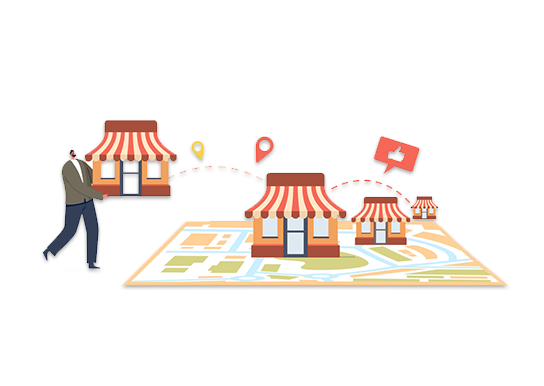Recipe for Growth: How Restaurant Software Boosts Your Restaurant Profits.

In the ever-evolving landscape of the restaurant industry, success hinges on more than just serving delicious food. While culinary excellence remains paramount, the modern restaurateur must also embrace technological advancements to thrive in a competitive market. Restaurant Software solutions have emerged as a secret ingredient, enabling restaurants to streamline operations, enhance customer experiences, and ultimately boost profits. This article explores the recipe for growth in the restaurant business, with a focus on how software is transforming the industry.
The Digital Dining Experience
In recent years, the way customers interact with restaurants has undergone a significant transformation. Gone are the days of relying solely on traditional reservations and printed menus. Today, patrons expect a seamless digital experience, from making reservations online to perusing a menu on their smartphones. This shift has prompted restaurants to adopt software solutions that cater to these digital demands.
One of the most noticeable trends is the use of reservation and table management software. Tools like OpenTable and Resy have made it easier than ever for customers to book tables, while also helping restaurants optimize their seating arrangements for maximum capacity. These platforms not only reduce no-shows but also allow restaurants to gather valuable data on customer preferences and habits.
Additionally, digital menu platforms and apps have become commonplace. QR codes have replaced physical menus in many establishments, offering customers a touchless and interactive way to browse dishes, view images, and access nutritional information. This not only enhances the dining experience but also allows restaurants to update their offerings in real-time, promoting seasonal specials or limited-time promotions.
Kitchen Efficiency and Inventory Management
In the heart of every restaurant, the kitchen, software solutions have been deployed to improve efficiency, reduce waste, and enhance the overall quality of food preparation. Kitchen management software assists chefs and kitchen staff in keeping track of orders, ensuring that dishes are prepared accurately and delivered to customers promptly.
Moreover, inventory management software has become indispensable for restaurants. By tracking ingredient usage in real-time, restaurants can optimize their supply chain, reduce food wastage, and make informed purchasing decisions. This not only saves money but also reduces the environmental footprint of the restaurant—a win-win for both the bottom line and sustainability.
Delivering Delightful Customer Experiences
Customer satisfaction is the cornerstone of a successful restaurant. Software tools are helping establishments take their customer service to the next level. For instance, customer relationship management (CRM) software allows restaurants to keep detailed records of their patrons, including their preferences, allergies, and special occasions. Armed with this information, restaurants can personalize the dining experience, surprising and delighting customers with personalized offerings and special treats.
Moreover, feedback and review management software enable restaurants to collect and analyze customer feedback, both positive and negative. This valuable data can inform operational improvements, menu changes, and staff training, all of which contribute to higher customer satisfaction and loyalty.
In addition, loyalty programs and mobile apps have become popular among restaurants. These apps often include features like mobile ordering, digital loyalty cards, and exclusive offers. By encouraging repeat business and rewarding loyal customers, these software-driven strategies can significantly boost revenue.
Efficient Staff Management
Managing staff can be one of the most challenging aspects of running a restaurant. Staff scheduling software has emerged as a vital tool to help streamline this process. These solutions take into account factors like labor laws, employee availability, and peak business hours to create efficient and fair schedules. By optimizing labor costs and reducing the risk of overtime, restaurants can allocate their budget more effectively and increase profitability.
Moreover, human resources and payroll software simplify the administrative tasks associated with staff management. This includes automating payroll processing, tracking employee hours, and managing benefits and taxes. The result is reduced administrative overhead and increased accuracy in staff compensation, which is crucial for employee retention and morale.
Analyzing Business Performance
To achieve sustainable growth, restaurants must constantly monitor their financial performance and make data-driven decisions. Restaurant software and analytics tools provide deep insights into key performance indicators (KPIs) such as revenue, expenses, and profitability.
These software solutions can also help with forecasting demand, allowing restaurants to adjust their operations and staffing levels accordingly. By predicting busy periods and optimizing resource allocation, restaurants can avoid overstaffing during slow hours and understaffing during peak times, ensuring a consistent and efficient customer experience.
The Bottom Line: Increased Profitability
Incorporating software solutions into restaurant operations isn’t just a trend; it’s a necessity for staying competitive and profitable in today’s market. From improving the digital dining experience to optimizing kitchen efficiency, software tools are reshaping every aspect of the restaurant business.
By adopting reservation and table management software, restaurants can maximize their seating capacity and minimize no-shows. Digital menu platforms and apps enhance the dining experience and allow for real-time updates. Kitchen and inventory management software reduces waste and streamlines food preparation.
Software-driven CRM and feedback systems help restaurants personalize the customer experience and make data-driven improvements. Staff management software optimizes labor costs and payroll processing. Analytical tools provide insights into financial performance, while forecasting capabilities help manage resources effectively.
Conclusion
The recipe for growth in the restaurant industry involves embracing software solutions that enhance every aspect of the business. By doing so, restaurants can not only meet the evolving expectations of their customers but also increase efficiency, reduce costs, and ultimately boost profitability. In this digital age, software is the secret ingredient that can turn any restaurant into a thriving, profitable establishment.



